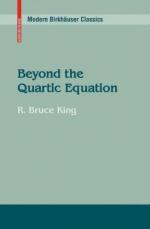|
This section contains 1,604 words (approx. 6 pages at 300 words per page) |

|
Overview
The solution of the cubic and quartic equations was one of the major achievements of Renaissance algebra. The publication of the results in Girolamo Cardano's book The Great Art brought charges that Cardano had broken his promise to Tartaglia, who claimed he had made the major discovery in the cubic case. Attempts to identify all solutions of the cubic, quartic, and higher order equations would require the invention of complex numbers and would lead to the discovery of the theory of groups, one of the most important ideas in modern abstract algebra.
Background
Our word "algebra" is derived from the Arabic Kitab al-jabr w'almuqabala, a book by the Arabic Mathematician Muhammad ibn-Musa al-Khwarizmi (c. 780-c. 850) which described an art of "restoration and reduction," that is, finding the value of unknown quantities in an equality by...
|
This section contains 1,604 words (approx. 6 pages at 300 words per page) |

|


